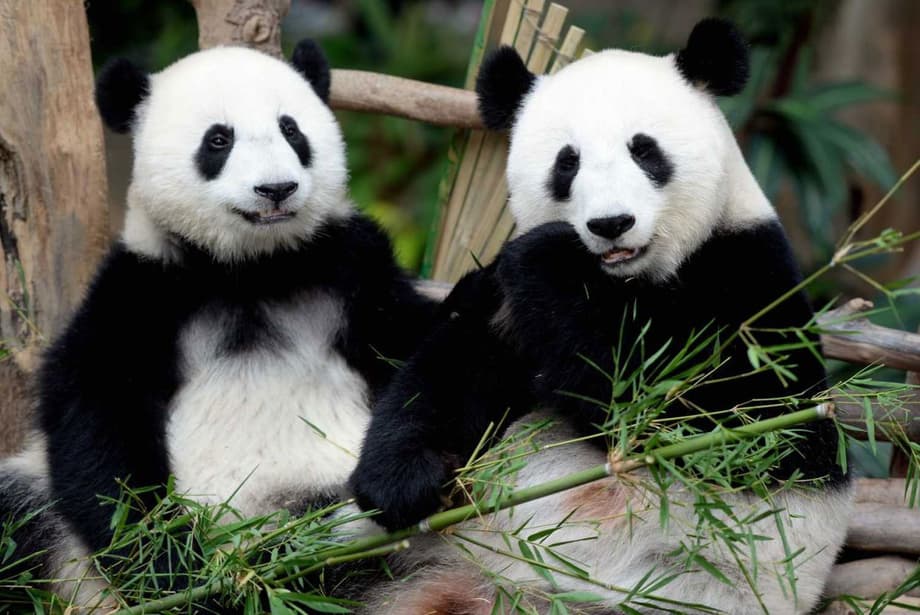A new chapter in Malaysia and China panda partnership
A new pair of giant pandas is set to arrive at Zoo Negara in the third week of November, marking the start of a fresh decade of collaboration between Malaysia and China. The arrival follows a new 10 year agreement, signed on April 16 during a state visit by Chinese President Xi Jinping. The agreement covers the period from 2025 to 2035 and provides for a younger pair, continuing a conservation and research partnership that has captured the public imagination for more than a decade.
The first pair on loan to Malaysia, Fu Wa and Feng Yi, renamed Xing Xing and Liang Liang, became star attractions after arriving in 2014. They produced three cubs during their stay and were repatriated to China on May 18 after 11 years in Kuala Lumpur. Their presence helped build a loyal audience for conservation, and their story became a symbol of friendship between Malaysia and China.
Officials say the new pandas will continue joint research on protection and breeding, with a focus on health monitoring, nutrition, and reproductive science. Preparations at Zoo Negara include logistics for transport, quarantine and acclimatization, and a reworked visitor experience to introduce the pair to the public. The renewal signals confidence in Malaysia’s capacity to care for a globally cherished species while deepening ties with China.
Why pandas, why now
Giant pandas are a rare conservation success story and a potent form of soft power for China. Loan agreements often arrive at high level diplomatic moments, and renewals tend to align with periods of steady bilateral cooperation. Malaysia’s updated arrangement fits that pattern. It reaffirms a partnership built on science, tourism, and public education, and it reflects ongoing goodwill between Kuala Lumpur and Beijing.
There are fewer than 2,000 pandas in the wild in China and around 420 living under human care. Zoos that host pandas support conservation through annual fees and long term research. These agreements typically include knowledge exchange, visits by veterinarians and keepers, and training on handling, enrichment, and husbandry. For host countries, pandas bring large crowds and a focus on wildlife protection, giving zoos a powerful platform to engage families and schools.
A short history of panda diplomacy
Pandas have traveled the world as goodwill ambassadors since the mid twentieth century. The United States received a famous pair in 1972 after President Richard Nixon’s visit to China. By the mid 1980s, China shifted from gifting animals to structured loans that fund conservation. Since then, panda arrivals have often tracked the temperature of relations with partner countries. When ties are warm, agreements are extended and new pairs move abroad. When tensions rise, loans sometimes expire or pause. A new wave of panda cooperation in recent years has included the return of pandas to Washington, D.C., and fresh placements in cities across the Pacific.
Malaysia’s first pandas
Malaysia welcomed Fu Wa and Feng Yi in 2014 and invested in a dedicated, climate controlled habitat at Zoo Negara. The pair drew sustained crowds and became a fixture of school trips and family outings. They also produced three cubs, including Nuan Nuan, Yi Yi, and Sheng Yi. The adults’ return to China in May closed an 11 year chapter marked by breeding success, high public interest, and regular scientific collaboration. Their story set a high bar for the new pair now preparing to take up residence in Kuala Lumpur.
What Malaysians will see at Zoo Negara
Visitors can expect a refreshed experience at the existing Panda Complex, designed to manage temperature, humidity, and lighting suited to a species native to cool mountain forests. The exhibit prioritizes animal welfare and visitor education. It typically includes climbing structures, secluded rest areas, and enrichment that encourages natural behaviors. Education panels and guided talks explain diet, conservation, and the science behind breeding programs.
After arrival, the new pair will undergo health checks and a settling in period before full public viewing. Keepers will watch eating habits, sleep patterns, and activity levels and adjust routines to help the animals adapt to a tropical country. On many days, pandas are most active during cooler morning hours, though schedules can vary, and Zoo Negara will manage viewing to reduce stress.
Younger pandas tend to be energetic and curious, which can make early months especially engaging for visitors. The public will see structured enrichment sessions, bamboo feeding, and veterinarian led monitoring that gives a window into modern wildlife care.
Care and costs
Pandas require meticulous care. They eat large amounts of bamboo, along with supplements, and they need precise climate control. Daily husbandry routines cover cleaning, behavioral enrichment, weight tracking, dental checks, and regular veterinary exams. Host zoos pay a yearly conservation fee, often cited around 1 million US dollars for a pair, and shoulder the costs of specialized facilities, medical care, and bamboo supply. These are substantial commitments, and they sit alongside a related expense many tropical zoos face, maintaining cool environments suitable for a temperate species.
Breeding and research
The new Malaysia China agreement continues a research track that includes reproductive science, neonatal care, nutrition, and disease surveillance. Data sharing between Chinese and Malaysian teams helps refine veterinary protocols and husbandry practices. In most loan agreements, any cubs remain the property of China and return there by about age four, where they can contribute to the broader managed population. The earlier success with three cubs shows the potential for the next decade. Younger pandas can offer stronger breeding prospects if genetics align and veterinary teams identify viable windows for reproduction.
The debate at home
As Malaysia prepares to welcome new arrivals, conversations about spending and priorities are also part of the picture. Panda care costs can be high, and some Malaysians argue those funds could support native wildlife that faces steep declines. Conservation groups have raised alarms about the Malayan tiger, with very few individuals left in the wild, and about other threatened species such as the tapir and the Bornean orangutan. Advocates want more resources directed toward habitat protection, anti poaching patrols, and community based conservation.
Supporters of the panda program point to tourism potential, sponsorships, and education. Pandas can bring large crowds, which boosts revenue for zoos and vendors. They also draw media attention to broader conservation messages. If managed well, a panda exhibit can serve as a gateway for visitors to learn about rainforest protection and the needs of endangered Malaysian species. The outcome depends on clear planning and how well funds from ticketing, memberships, and donations flow into local conservation work.
A pragmatic path combines both goals. Transparent accounting, measurable conservation targets, and public reporting can help ensure that panda related income supports native species as well. Education programs can link panda stories to the challenges facing wildlife in Malaysia’s forests, turning a global icon into a catalyst for local action.
How panda loans are structured
Panda loans run for fixed terms, often 10 years, and spell out responsibilities for animal welfare, scientific cooperation, and funding. China retains legal ownership of the animals, while the host zoo commits to standards for husbandry and veterinary care. The best programs create deep ties between teams, including keeper exchanges, joint studies, and regular inspections. Host zoos secure bamboo sources, sometimes from local farms, and maintain veterinary equipment for imaging, blood work, and neonatal care.
Agreements cover breeding protocols and the status of any cubs. Young born abroad usually return to China by age four to join the broader managed population and preserve genetic diversity. Naming often involves input from both sides and can include public participation. The logistics of repatriation are part of the agreement, with veterinary checks, transport, and quarantine set out in advance. Periodic reviews within the 10 year window allow both sides to adjust operations as science and conditions evolve.
The updated Malaysia arrangement runs from 2025 to 2035 and was signed during high level talks on April 16. It renews a successful formula grounded in research, education, and cultural exchange and positions Zoo Negara for another decade as a regional center for panda care.
What happens next
Once the pandas land in Kuala Lumpur, they will move to quarantine and a controlled introduction to their habitat. Keepers will fine tune temperature and humidity and gradually expand access to viewing areas. An official unveiling typically follows once veterinarians confirm the animals are eating, moving, and resting well. The public can expect updates from authorities on the first week when viewing is allowed and on new education programs built around the pair.
- Arrival window in the third week of November
- Quarantine and veterinary checks before full public viewing
- Acclimatization period with staged access to viewing areas
- Education content refreshed to highlight panda care and Malaysia’s wildlife
- Research planning for breeding and health studies with Chinese partners
- Regular updates from authorities on milestones and public access
Key Points
- Malaysia will receive a younger pair of giant pandas at Zoo Negara in the third week of November.
- The new 10 year agreement, signed on April 16 during a state visit by China’s president, covers 2025 to 2035.
- The previous pair, Fu Wa and Feng Yi, renamed Xing Xing and Liang Liang, were repatriated to China on May 18 after 11 years in Malaysia.
- The renewed partnership focuses on research in health, nutrition, and breeding, with continued keeper and veterinary exchanges.
- Host zoos typically pay an annual fee that supports conservation in China and invest in climate control, veterinary care, and bamboo supply.
- Any cubs born in Malaysia will return to China by about age four under standard loan terms.
- Debate continues in Malaysia about balancing panda costs with funding for native endangered species, including the Malayan tiger.
- Public viewing will begin after quarantine and acclimatization, with authorities to announce exact dates and programs.











